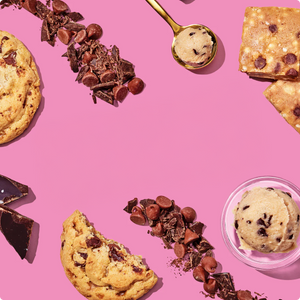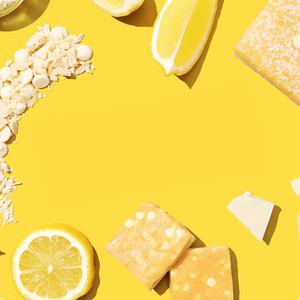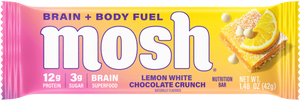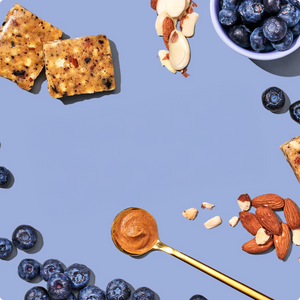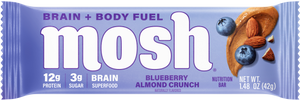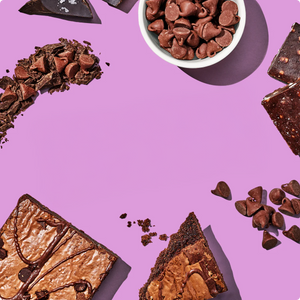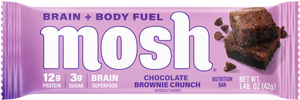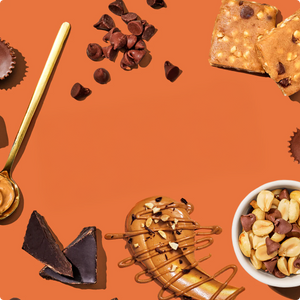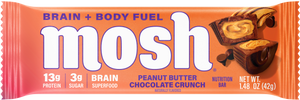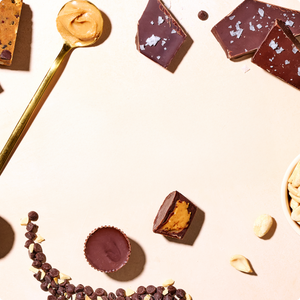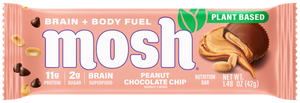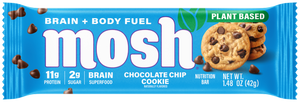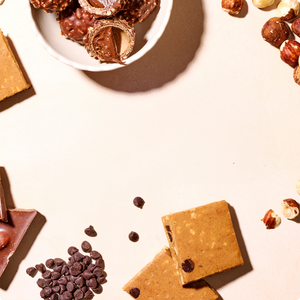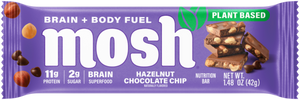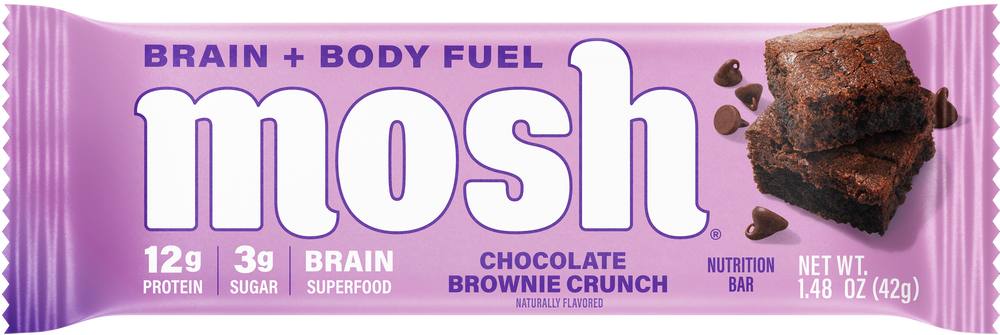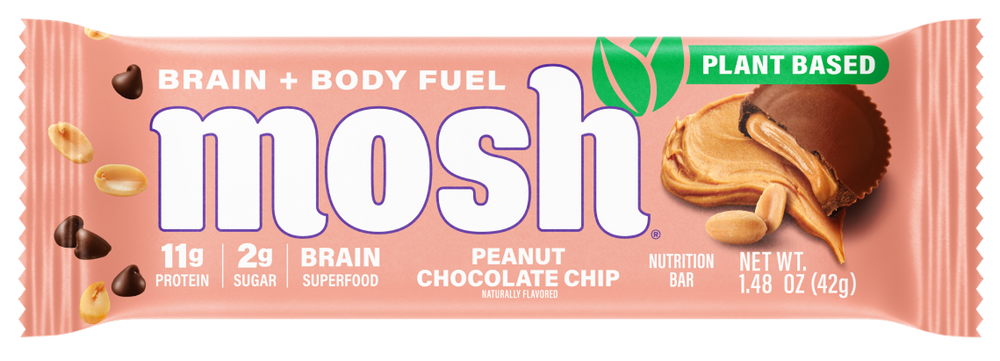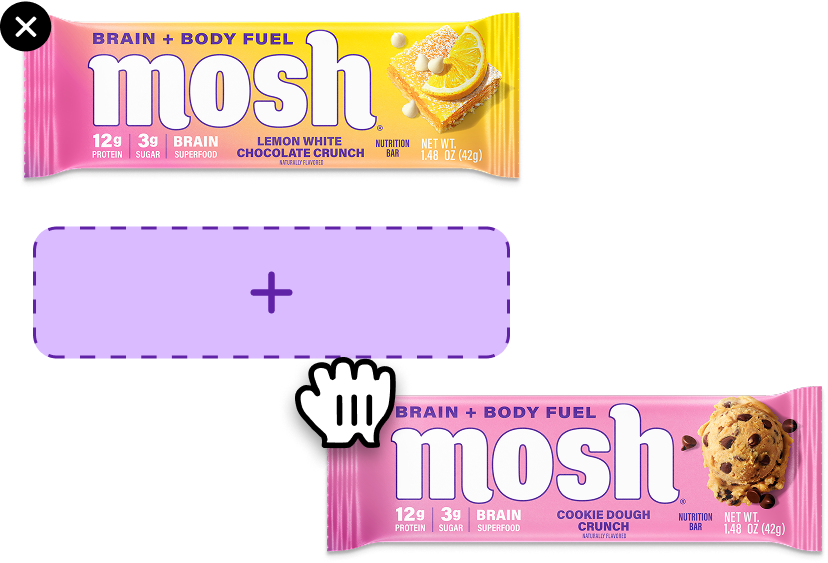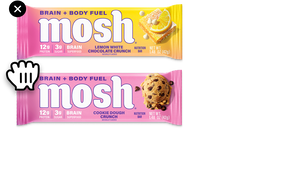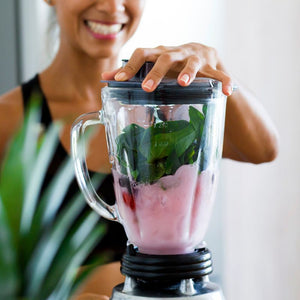It’s never too late to get serious about your health. But who wants to eat bland, boring snacks all the time? One of the most common misconceptions about eating healthy is that it means giving up flavor. Most people think that all healthy snack ideas will likely be hard to stomach.
Well, the good news is that’s not true at all! To prove it, we’ve compiled a list of 16 different snacks that are both delicious and good for you. Let’s dive in!
1. Protein Bars
Many of the foods on this list will require some time to prepare or cook them, and there will be days when you just don’t have the time to dedicate to prep. That’s where eating a protein bar can come in to save the day.
You should be selective when choosing a protein bar because, unfortunately, there are plenty of candy bars out there merely disguised as protein bars. A little too much added sugar, ingredients like marshmallow puff or sweetened cereal, and high fructose corn syrup to hold it all together aren’t quite the qualifying ingredients to make this list.
On top of that, there are some protein bars out there with better ingredients and plenty of protein, but then not much else. These aren’t necessarily bad for you, but they typically don’t offer much besides a decent protein boost to your diet.
With that, look for a protein bar with high-quality protein, no added sugar, low carbs, a nice helping of fiber, and other beneficial nutrients that can nourish your mind and body all at once (aka, a MOSH bar).
2. Acai Berry and Kale Smoothie
Who doesn’t love a good smoothie as a snack? Obviously, using ice cream for your smoothie is not the best move. However, you can still have an explosion of flavor with the right combination of fresh fruits and vegetables (and your favorite milk choice, be it whole milk or plant-based).
For us, the unique flavors of acai berries and kale make them the perfect combination for a smoothie. Additionally, both of these foods are loaded with nutrients. Acai berries are an incredibly potent source of antioxidants, while kale is a powerhouse for vitamins and minerals.
For an added dose of fresh healthy fats, consider adding nut butter, like almond butter or cashew butter. Throw in just a sprinkle of chia seeds to add extra protein and fiber for a well-rounded smoothie experience.
3. Avocado Deviled Eggs
Avocados are incredibly nutritious, but we’ll cover them a little later. For now, let’s go over the benefits of eating eggs. There are few foods in the world as nutrient-dense as an egg.
A regular-sized egg contains:
- About six grams of protein (with all nine essential amino acids)
- Multiple vitamins (A, B12, B2, B5, D, and more)
- Roughly 110 milligrams of choline (good for brain function)
- A variety of minerals (calcium, phosphorus, iron, potassium, zinc, and more)
- Nearly five grams of fat (the majority being unsaturated)
The only downside of high-protein hard-boiled eggs is the yolks usually have a lot of cholesterol. Thankfully, you can easily cut down on that cholesterol by removing the yolks in your deviled eggs and subbing avocado in their place.
You can still season them to your taste using sea salt, pepper, garlic, or paprika. This afternoon snack should give you the boost you need to make it through the workday.
4. Bell Peppers and Guacamole
Guacamole is primarily made from mashed avocados (notice a trend developing here) and lime juice. Usually, it’s flavored with salt and cilantro, and also often contains tomatoes and onions. It’s a delicious snack on its own but is often paired with tortilla chips.
Tortilla chips are just a little healthier for you than potato chips, but we have a way to eliminate them from the equation. Instead, you can use veggies like sliced bell peppers as the delivery method for your guacamole.
Bell peppers come in a wide spectrum of tastes (red being sweeter, green being bitter, and yellow and orange in the middle), so you’ll have a variety of flavor profiles. Few foods offer more antioxidants than bell peppers, and they also provide an abundance of fiber, potassium, vitamins A and C, and folic acid.
5. Buffalo Chicken Celery Sticks
Many people believe that celery is a “negative calorie” food. The belief is that celery has so few calories that eating it will burn more calories than it provides. Unfortunately, that’s not the case with celery (or any other food, for that matter).
However, celery is still a very low-calorie food (only about six calories per stick), and you can get really creative with it. One way to express such creativity is to combine the traditional flavors of “buffalo chicken” with celery. You’ll need some shredded chicken, buffalo sauce, pepper, garlic powder, and onion powder to get started.
Normally, such a dish is flavored with ranch dressing, bleu cheese, or mayonnaise. To keep it super healthy, substitute with Greek yogurt instead. This dish has so many intense flavors that you probably won’t even notice the difference.
6. Chipotle Edamame
Edamame is an immature, whole soybean still inside the lentil pod. Naturally, edamame is an excellent source of soy-based protein, but it’s also a great snack that is incredibly rich in fiber, antioxidants, isoflavones, and vitamin K.
Most people opt for boiling edamame in salt water and sucking out the beans from inside since you can’t eat any soy product raw. But you can go a little further and add some real spice to it.
After you boil the edamame pods, you can drizzle them in a light chipotle sauce. You don’t want to go overboard because the base of most chipotle is mayonnaise. However, you’ll quickly learn that a little chipotle will go a long way in terms of flavor.
7. Cottage Cheese and Strawberries
Dairy products are fairly well known as solid sources of protein. The problem is they usually come with quite a bit of saturated fat, too. Cottage cheese is an outlier when it comes to dairy as it’s relatively low in fat while still an excellent source of protein. It’s also very high in selenium, vitamin B12, and phosphorus.
There are plenty of dishes that cottage cheese will fit nicely into. But if you really want to try something special, simply eat it with strawberries.
The creamy texture of the cottage cheese pairs very well with the soft bite of a strawberry. You can chop strawberries into your cottage cheese and eat with a spoon or simply dip the strawberry right in. You won’t find an easier recipe on this list.
8. Garlic Parmesan Cauliflower Bites
Cruciferous vegetables such as cauliflower, broccoli, and cabbage aren’t as beloved as some other vegetables. It’s unfortunate because these vegetables are especially rich in vitamins A, B9, C, and K, in addition to potassium, selenium, antioxidants, and fiber.
One simple way to add more of these nutrient-rich veggies into your diet is to make garlic parmesan cauliflower bites. All you have to do is cut up some cauliflower into bite-sized florets. Toss them in a bowl with a little bit of melted butter, add parmesan and garlic, and cook at 425 degrees for about 20 to 30 minutes. You’ll end up with a delicious and nutritious snack that’s well worth the effort.
9. Grapes and Brie
The combination of potential flavors when pairing fruit and cheese is nothing short of phenomenal. You might have to try a few different combinations to find your favorite, but an easy start would be pairing grapes with brie.
Grapes are particularly high in potassium, antioxidants, and other essential nutrients. Brie is a cheese that originates from a region in France with a soft texture and flavor that make it a very common pairing with fruits, bread, and crackers. It’s also high in healthy fats, protein, calcium, and vitamin B12, which keeps this snack on the healthy side.
10. Greek Salad
Everyone knows salads are an excellent healthy snack (if you take it easy with the dressing). However, opting for the Greek version of a salad takes this healthy dish to an entirely new dimension.
Greek salads utilize foods grown in the Mediterranean, including cucumbers, tomatoes, green bell peppers, red onions, and olives. And you can’t forget the star of the show: feta cheese.
These foods are staples in the highly regarded Mediterranean diet (known for its health benefits). The combination of flavors makes it easy to skip the dressings; you can opt for some balsamic vinegar, though, as it features several antioxidants.
11. Greek Yogurt and Blueberries
We discussed cottage cheese's benefits earlier and mentioned it being one of the healthiest dairy products. Well, say hello to Greek yogurt, which is almost universally considered the healthiest dairy option.
You get roughly the same amount of protein with fewer calories and sodium, and more calcium and probiotics. It’s truly the gold standard for dairy. It’s also extremely customizable; pretty much anything goes well with it.
You may have noticed it’s already appeared on this list several times as a substitute for other foods. You can add fruits, vegetables, nuts, seeds, and anything you want to Greek yogurt.
(We like to opt for blueberries because of their brain benefits!)
12. Homemade Trail Mix
You can easily find trail mix for sale in the health section of most stores. The problem is many of them could be stocked in the candy section. The store-bought options typically load their mix with milk chocolate and toss in a few nuts and oats to be “healthy.” Commonly added sweets include chocolate chips and even M&Ms, so do your best to find mixes that either limit the sweeter additives, or at least opt for ones with dark chocolate, which is slightly better for you than its sugary counterparts.
Ideally, you can simply make trail mix or granola at home. That way, you can ensure that the chocolate ratio is appropriate, and you can use the nuts, dried fruits, pumpkin seeds, and oats that you prefer.
You can really get creative here if you would like. You can start with almonds, dried cranberries, and flaxseeds, but feel free to add and subtract what you like (within reason, of course).
13. Hummus and Baby Carrots
Hummus is an extremely popular dip from the Middle East. Hummus is a creamy spread made from mashed-up raw or roasted chickpeas (also called garbanzo beans). Chickpeas provide a variety of vitamins, minerals, fiber, and polyunsaturated fatty acids. You don’t want to eat it at every meal, but it can pack a huge punch for a snack or as a side.
Think of hummus as a healthy substitute for chips and dip. If hummus is the “dip,” you’ll need a “chip.” Pretty much any vegetable will work here, but baby carrots make for an especially tasty and convenient combo. They’re also loaded with antioxidants, fiber, and an incredible supply of vitamin A.
Feel free to try celery, cucumbers, or bell peppers with your hummus, too. Add a drizzle of olive oil to the top of your hummus for a Mediterranean flair. This work snack is just the pick-me-up the doctor ordered.
14. Loaded Zucchini Fries
Fries are such a tasty treat that goes well with most meals. Unfortunately, potatoes aren’t exactly the healthiest food out there because of how they’re commonly prepared. It’s a terrible sacrifice to give up fries as a snack option. Luckily, zucchini can be a healthy potato substitute, keeping fries on the menu.
Zucchini is packed with a ton of fiber and nutrients, and is especially high in vitamin B6 (pyridoxine). The low calories of zucchini make it the perfect sub for the high calories of potatoes.
You’ll want to avoid frying your zucchini fries (an air fryer is best) and stay away from white flour if you can. But you can add parmesan, garlic powder, and panko to your fries and dip them in marinara, dijon mustard, or another low-calorie condiment.
15. Peanut Butter and Apples
Peanut butter is a food commonly included in a lot of unhealthy snacks. However, peanut butter itself is quite healthy for you. It’s loaded with many nutrients, including vitamin E, magnesium, iron, selenium, and vitamin B6.
You don’t want to go crazy with your peanut butter, as it does have quite a bit of fat. However, a few tablespoons for a snack is totally fine as part of a healthy diet.
You can add peanut butter to fruit to create an even more nutritious snack. Apples, for example, are filled with fiber, antioxidants, vitamins, and minerals. The combination of creamy peanut butter with a crispy apple can give your taste buds something to sing about. You can also opt for bananas or celery to mix it up a little.
16. Whole Grain Toast and Avocado
You’ve seen avocados appear on this list a few times already. Now it’s time to find out why.
Avocados are technically a fruit, but they don’t have many of the same properties as other fruits. For example, fruits are usually high in carbs and low in fat. Avocados are the opposite, as they are packed with healthy fats and almost no carbs.
This unique combination (along with a high concentration of fiber, potassium, and vitamin E) is one of the main reasons avocados are so good for you.
You can add avocados to almost anything above, and they’ll fit nicely. But if you’re looking for a simple way to eat more avocados, just spread some on toast. Aim to use whole-grain bread, as white bread is virtually devoid of nutritional value. Other than that, all you have to do is spread on the avocado, add a sprinkling of salt, and chow down.
You Don’t Have To Suffer To Eat Healthily
It’s a common misconception that healthy foods are void of flavor. The list above only scratches the surface of delicious and healthy options for snacking, and as long as you’re using the right ingredients, you can get very creative with flavors.
Before long, you’ll wonder how you could enjoy eating doughnuts, candy, and potato chips as a workday snack. Trying to find the best snack for you may take a while, and completing this list will likely take a couple of weeks if you try everything one day at a time. Be patient and take your time — you probably won’t find your exact recipe of choice on the first try.
The takeaway? Eating healthy doesn’t always require much work or a boring flavor profile — get started by familiarizing yourself with better-for-you ingredients like avocados, Greek yogurt, bell peppers, and more, and experiment from there!
Looking for more articles to expand your knowledge on foods to boost your wellness? Explore our other informational articles on mind and body-nourishing foods here!
Sources:
Whole Grains: Hearty Options for a Healthy Diet | Mayo Clinic
Avocados | The Nutrition Source | Harvard School of Public Health
Apples | The Nutrition Source | Harvard School of Public Health
Advances in Research on the Carrot, an Important Root Vegetable in the Apiaceae Family | PMC
The Problem With Potatoes | The Nutrition Source | Harvard School of Public Health
Is Dark Chocolate Good for Your Heart? | Scripps Health
Vinegar | The Nutrition Source | Harvard School of Public Health
The Best Things You Can Eat: Top 5 Dairy Superstars | Dairy Max
Diet Review: Mediterranean Diet | The Nutrition Source | Harvard School of Public Health
10 Health Benefits of Grapes | Cleveland Clinic
What Are Cruciferous Vegetables — and Why Are They So Good for You? | Cleveland Clinic
Is Cottage Cheese Good for You? | Consumer Reports
Everything Edamame: Biology, Production, Nutrition, Sensory and Economics | PMC
Does Eating Celery Really Burn Calories? | BBC Science Focus Magazine
Are Eggs Good for You or Not? | American Heart Association
The Many Types, Health Benefits of Kale | Mayo Clinic Health System
Antioxidant and Hypolipidemic Activity of Açai Fruit Makes It a Valuable Functional Food | PMC


